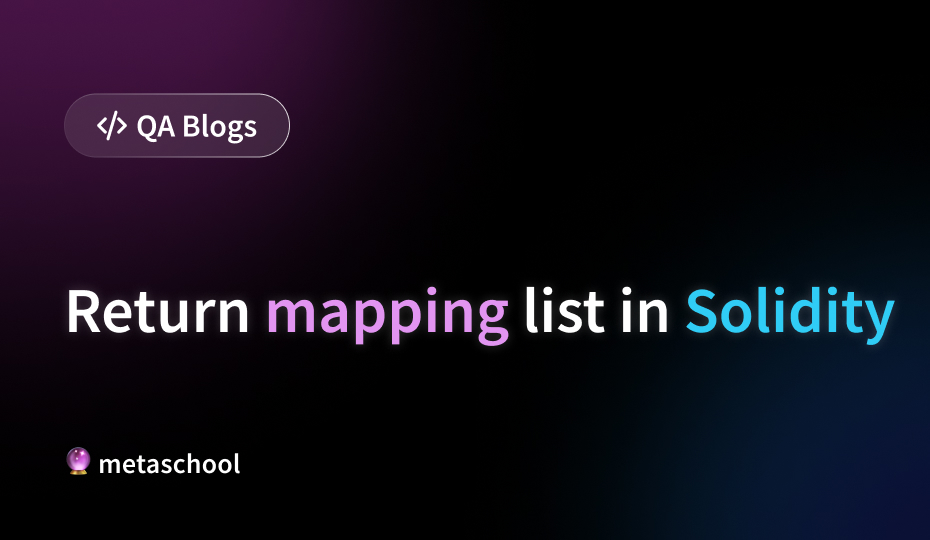Table of Contents
The mappings in Solidity are powerful tools for storing and managing data, but directly returning an entire mapping can be tricky. Let’s learn why.
Mappings and Return Limitations
Imagine your Solidity contract as a treasure chest filled with various data items categorized by unique keys. Mappings are like compartments within this chest, where each compartment holds key-value pairs. The challenge arises because Solidity doesn’t allow directly returning the entire chest with all its compartments at once.
Here’s a breakdown of the limitations:
- Storage vs. Memory: They reside in the blockchain’s storage, which is permanent and expensive to access. Returning a large mapping can be gas-intensive and impractical.
- Data Format: Solidity functions can only return specific data types like integers, strings, or arrays. A complete mapping with all its key-value pairs doesn’t neatly fit into these categories.
🔥 Check this course out: Build a One Piece Personality dApp With Solidity
Alternative Approaches
So, how do you retrieve data from your treasure chest without taking everything out at once? Here are some effective strategies:
Return Individual Values by Key
This is the most common approach. You can write a function that accepts a key as input and returns the corresponding value from the mapping.
mapping(address => uint256) public highScores;
function getHighScore(address player) public view returns (uint256) {
return highScores[player];
}
In this example, the getHighScore function takes an address (player’s address) as input and returns the associated high score stored in the highScores mapping.
Iterate over the Mapping (Off-chain)
For scenarios where you need to process all mapping entries, you can iterate over the it using a loop. However, this approach isn’t ideal for on-chain operations due to gas costs. It’s better suited for off-chain processes where you can loop through its data retrieved from the blockchain.
Return Slices or Limited Sets
If you only need a specific subset of data from the mapping, you can design your function to return a limited set of key-value pairs or a specific range of entries. This approach can be more gas-efficient than iterating over the entire mapping.
🔥 Check this course out: Build a Semi-Fungible ERC404 Tokens’ Marketplace
Choosing the Right Approach
The best method depends on your specific use case. Here are some guidelines:
- Individual Values: Use this for retrieving specific data points based on known keys.
- Off-chain Iteration: This is suitable for analyzing large datasets outside the blockchain environment.
- Slices or Limited Sets: This is a good option when you only need a portion of the mapping data.
Additional Tips for Efficient Mapping Usage
- Consider Alternative Data Structures: If you frequently need to iterate through the entire mapping data on-chain, explore alternative data structures like arrays or structs that might be more gas-efficient for specific use cases.
- Minimize Mapping Reads: Since storage access is expensive, optimize your code to minimize the number of times you read from the mapping. Consider caching frequently accessed data in memory variables if possible.
Remember: While directly returning an entire mapping isn’t possible in Solidity, these alternative approaches allow you to effectively access and manipulate data stored within your mappings. By understanding the limitations and choosing the right approach, you can leverage the power of mappings to build efficient and functional smart contracts.
Try it out, ask us questions, and tell us how it went by tagging Metaschool on Social Media.
Follow us on –
🔮Twitter – https://twitter.com/0xmetaschool
🔗LinkedIn – https://www.linkedin.com/company/0xmetaschool/
